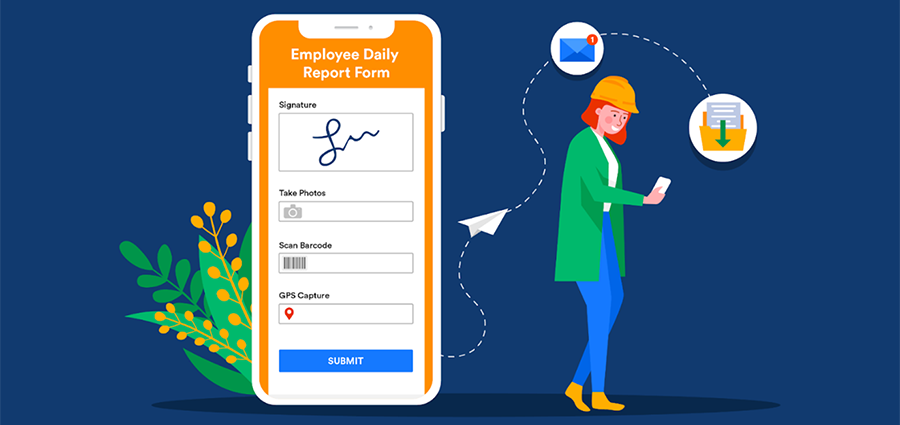7 Things That Can Help You Improve
Your Data Collection Skills
See also: Designing Research
Analytics and data science are becoming extremely relevant in government and corporate decision-making.
It is critical to understand the fundamentals of research and information in order to know how companies make important business decisions.
An important part of data science is data collection. And let’s see why collecting the right data has become more important than ever in the current era.
The quantity of data available to businesses will rise significantly as they incorporate more technology. However, not all of your available data is meaningful and beneficial.
As you gather more information, it will become more difficult to process and analyze. To avoid problems, make sure you incorporate a comprehensive data collection framework.
The secret to successfully using the statistics available to any company is a firm base – in this scenario, the method you use to collect data.
By having the right structure in order, you'll recognise what stats to gather and quantify as well as how essential it is. You can then more efficiently interpret and analyze it to make better decisions.
Whether you aim to roll out a fresh data collection framework or enhance the manner in which you presently collect data, here are seven pointers to consider:
7 Points to consider if you aim to boost your data collection prowess
Here's an in-depth overview of the top seven tips for data collection skills improvement so that your company is able to compete and stay afloat in this tough data-driven market.
1. Strategize, filter, and set objectives

The first suggestion for improvising your data collection abilities is to develop a methodological approach.
Have precise strategies for data collection, analysis, categorization, and management. It has to be a consistent framework that addresses all phases of the data collected.
Again, firms need a large amount of information, and you must be clear as to which statistics you require in your research. Hence, filter out the channels from where you receive data.
The information — which can come via customer responses and input or through your customer relationship management team — can all serve as relevant data points according to your end business goals.
Finally, for your data to serve its purpose, you should have clear objectives in terms of what you wish to learn from the data analysis.
Different companies and brands may have different goals. You should establish a defined set of goals so that you gather the appropriate data and conduct the most favorable analysis for your firm.
2. Consider the importance of customer and behavior-related data
Frequently, the most critical data you require relates to your consumers. Hence, identify key communications with customers.
For instance, if you have an ecommerce website, you'll wish to know from where your clients visit your site, what they browse, what they include in their basket, and what they eventually buy.
You can search for metrics plus data collection methodologies pertaining to these actions after first defining key interactions to monitor.
This helps make it simpler for you to keep track of the most important information.
Again, don't just concentrate on consumers who have made purchases or abided by your entire business chain.
Consider what behavior could result in information that is critical to the organization.
To continue with the ecommerce website example, this data could also include how much further down the webpage individuals navigate, the number of pages they check while searching for particular product categories, the time they spend on your site, and at what point they leave.
This type of data collection and analysis can become a great indicator of what processes are functioning well and which areas need improvement.
Once you've decided what information you would like to obtain, think about how much it will cost to gather that data as every extra data point, as well as survey questions, will increase the cost.
3. Use effective data collection tools

Forms and questionnaires are among the most popular data gathering methods, owing to how simple, customizable and effective they are.
For example, medical forms enable you to easily and securely collect data from a massive user base — in this case, patients in a hospital. Since the information is organized by default, this sampling technique significantly enhances data accuracy.
If properly designed, such a framework can be used to obtain answers to closed-ended questions — generating a considerable amount of data and leads.
Another method of collecting data that is used to collect critical info is the interview. It can be done in person, over the phone, or via web chat.
In interview sessions, you can pose open-ended questions. Even here, you should be conscious about the questions being asked and must not compromise on the efficiency.
Records and document-based data collection gathers information by using existing information. This technique is used to identify monetary and attendance numbers, for example.
Finally, survey is a data collection approach whose end goal is to obtain collective answers instead of individual opinions.
You can pose open-ended queries such as "What was your preferred thing about this software?" or similar ones. A shared viewpoint lends an overall understanding of how customers perceive your offerings in the market.
4. Master the art of mobile data collection
While documented data gathering is a time-honored method, mobile-based techniques cannot be ignored in the present era. They are quick and efficient, and they enable you to obtain a wide range of data at a minimal price.
With today's flood of low-cost smartphones, there hardly exists any reason not to opt for mobile-based information collection.
There are three kinds of mobile data gathering.
The first one is IVRS (interactive voice response technology), that will place a call to your interviewee and ask him or her pre-recorded queries.
Second is SMS collection of data that will share a text with your respondent, after which he or she will be capable of answering text queries on his or her phone.
Third, using mobile applications, ground surveyors can effectively enter data into an immersive questionnaire while speaking with each participant.
Also, every tool has its own benefits and drawbacks, so choose the best one for your questionnaire and people surveyed.
5. Identify key metrics and data sources
The method you use to gather information may differ depending on how you intend to quantify it.
This encompasses numerous metrics you employ to specify the successes and failures of promotional campaigns, sales efforts, and also how visitors are tracked.
Make a note of which metrics your company currently uses, because those will frequently steer you in the direction of the relevant information you'll need to gather.
Again, there are several redundancies in collection of data in many businesses. A CMS (content management system), for instance, will frequently also have multiple identical data sets as Web analytics.
A POS (point of sale) might very well have similar data sets as your inventory system. As a result, determine which systems will provide you which data -- to avoid repetitions and wasting resources.
Many companies use data from across multiple channel to calculate a single key metric. To make sure that you obtain the correct data, you must classify these sources and verify that these are compliant with your data capturing system.
If they're not, you might face issues and even make poor decisions because of flawed data, which can also cost your company money.
6. Identify who will review your data
When you incorporate data gathering processes, as well as tools and data analysis methods, you will almost certainly begin to generate reports based on this information.
As a result, it's a smart option to decide who will analyze these findings and what will be the most valuable knowledge for them.
These details will differ depending on context, so be sure to specify the data they believe are essential.
For best results, take into account who would be reviewing your data reports and which categories of relevant data must be captured so as to generate them.
7. Finalize a frequency for data capture and analysis
This step can be difficult to master, particularly if you operate in a volatile market or if your company is constantly changing.
Your best option is to consider when you anticipate requiring data.
For instance, if you are in charge of submitting a quarterly sales forecast, it may be a smart option to obtain data at least each week so that you have enough material to create a final report toward the conclusion of the quarter.
You must also consider who will receive the findings and how lengthy various campaigns or commercial transactions will be.
Each company will have a different frequency, so choose something that truly works for you.
Conclusion
We hope you have gathered a deeper insight regarding the different techniques and skills, vital to improve your data collection skills.
We are sure that employing these tips will aid you in your business. You have also learned about various methods used in sampling procedures, which can assist you if you concentrate on and strengthen your weak spots.
